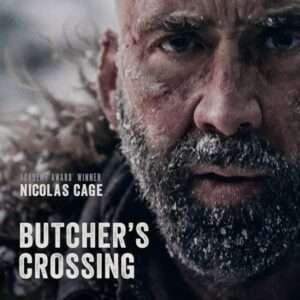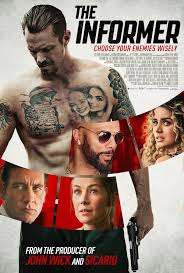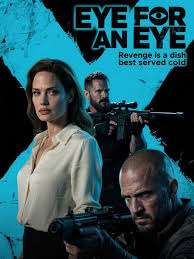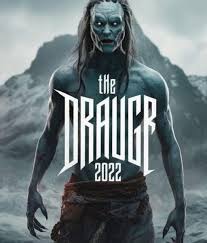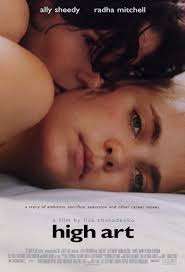Directed by Quentin Tarantino
Starring: Samuel L. Jackson, Kurt Russell, Jennifer Jason Leigh, Walton Goggins, Tim Roth, Michael Madsen, Bruce Dern, Demián Bichir
Runtime: 187 minutes (Roadshow Version)
Quentin Tarantino’s The Hateful Eight is a slow-burn, snow-drenched Western that swaps the wide-open vistas of frontier heroism for a claustrophobic, blood-soaked stage where trust, civility, and survival break down into a symphony of violence. Released in 2015 as Tarantino’s eighth feature film, it’s a deliberately paced chamber piece disguised as a genre movie—equal parts spaghetti Western, Agatha Christie mystery, and brutal morality play.
If Django Unchained was a revenge fantasy dressed in gunfire and operatic flair, The Hateful Eight is a colder, more cynical story, obsessed with suspicion and confined by both its physical and emotional spaces.
🐎 The Premise: Who Can You Trust in a Room Full of Killers?
Set a few years after the American Civil War, the story begins in the frozen Wyoming wilderness. Bounty hunter John “The Hangman” Ruth (Kurt Russell) is transporting fugitive Daisy Domergue (Jennifer Jason Leigh) to Red Rock to hang. On the way, they pick up Major Marquis Warren (Samuel L. Jackson), a Union war hero turned bounty hunter, and Chris Mannix (Walton Goggins), a loud-mouthed Southerner claiming to be Red Rock’s new sheriff.
As a blizzard approaches, the group takes refuge in Minnie’s Haberdashery, a remote stagecoach lodge already housing four mysterious men: Oswaldo Mobray (Tim Roth), Joe Gage (Michael Madsen), General Sandy Smithers (Bruce Dern), and Bob (Demián Bichir), who claims to be watching the place for the absent owners.
From there, The Hateful Eight evolves into a taut, paranoid bottle thriller. Secrets are revealed, alliances are tested, and blood is spilled as it becomes clear that not everyone is who they say they are—and someone (or several someones) aren’t leaving the cabin alive.
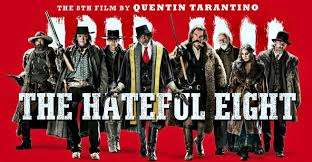
🎭 Performances: A Cast of Venom and Virtuosity
What elevates The Hateful Eight is its ensemble cast, all perfectly suited to Tarantino’s verbose, sardonic style.
Samuel L. Jackson, in his most commanding Tarantino role since Pulp Fiction, dominates the screen as Major Warren—a man defined by pain, pride, and a cruel sense of humor. Jackson’s portrayal balances charisma and menace, especially in a controversial scene involving a Confederate general and a tale of revenge that cuts deeply into the racial scars of America.
Jennifer Jason Leigh is a revelation as Daisy Domergue. She’s battered, brutalized, and bleeding for much of the film, but never once appears weak. Leigh crafts a character who is feral, calculating, and morbidly entertaining—her unpredictability makes her the film’s wild card and emotional nucleus.
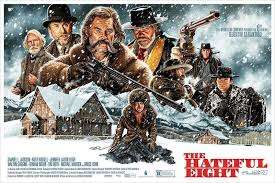
Kurt Russell channels John Wayne crossed with a sadistic streak, chewing through Tarantino’s ornate dialogue with conviction. Meanwhile, Walton Goggins walks away with many of the film’s best moments, playing the racist but oddly endearing Mannix, who transitions from comic relief to something more human by the film’s end.
Tim Roth’s delightfully theatrical Mobray, Madsen’s stoic cowboy, Bichir’s enigmatic “Mexican,” and Bruce Dern’s bitter general all add texture to a cast bursting with personality. Everyone’s a liar. Everyone’s dangerous. And everyone’s got a gun.
🧠 Themes: Justice, Vengeance, and the Fragility of Truth
Tarantino’s films often circle around themes of revenge and moral ambiguity, but The Hateful Eight is perhaps his most nihilistic take yet. Justice in this world is arbitrary—nothing more than a matter of who’s left standing when the smoke clears.

The film is steeped in post-Civil War tension. Racism, legacy, and the lies we tell ourselves about national identity are deeply embedded in the characters’ motives. Tarantino uses the isolation of the cabin as a crucible to examine what happens when people with radically opposed ideologies are forced into close quarters with no rules—and no escape.
In many ways, it feels like a violent political allegory for a fractured America, written in gunpowder and blood.
🖋️ Writing and Dialogue: Tarantino Unleashed
If you come to The Hateful Eight expecting non-stop action, you’ll likely be surprised—or bored. Much of the runtime is devoted to long, winding conversations, where words become weapons and stories often lead to death.
Tarantino’s dialogue is as sharp and layered as ever, mixing gallows humor with a kind of theatrical intensity. Every monologue doubles as manipulation, every casual insult hides deeper tensions. It’s a film built on dread and delay, where the fear isn’t just of violence but of not knowing who will explode first.
This patience won’t work for every viewer. But for those who appreciate Tarantino’s rhythm—where a coffee being poisoned is just as tense as a gunfight—it’s masterfully orchestrated.
🎥 Cinematography & Style: Intimate Grandeur
One of the most talked-about aspects of The Hateful Eight is its presentation in Ultra Panavision 70mm—a format historically reserved for epic landscapes, not a single-room drama. Robert Richardson’s cinematography makes sense of this contradiction by using the wide frame to trap characters within the space. Every glance, every twitch becomes part of the tension.
The exterior shots—sweeping snowscapes, dark skies—evoke classic Westerns, but once inside, the camera becomes a voyeur. The mise-en-scène is meticulous, and the way Tarantino blocks and frames action within the cabin is a masterclass in visual storytelling.
🎵 Music: Morricone Returns
For the first time in his career, Tarantino worked with a legendary composer: Ennio Morricone. The result is one of the film’s greatest strengths. Morricone’s brooding, icy score—some of it adapted from unused cues from The Thing—builds unease with every note. It’s haunting, minimal, and perfectly matched to the slow-burning suspense of the narrative.
The music becomes a character in itself, warning the audience that something terrible is always just moments away.
🔫 Violence and Bloodshed
When the violence does arrive, it’s grotesque and sudden. Tarantino doesn’t shy away from gore—heads explode, guts spill, and poison causes vomit so bloody it borders on absurd. The extremity is part of his trademark, but here it feels intentionally repulsive, underscoring the futility and brutality of the characters’ choices.
📝 Final Verdict
The Hateful Eight is not for everyone. It’s long, talky, and unapologetically nasty. But for those willing to sink into its frozen world of liars and killers, it’s a grim, gripping ride—a theatrical Western tragedy shot like an epic, scored like a horror movie, and acted with venomous glee.
It’s Tarantino at both his most indulgent and his most disciplined: indulgent in dialogue and runtime, disciplined in how he builds mystery, dread, and character tension with surgical control. The result is one of his most divisive yet most interesting films—full of bile, brilliance, and bullet holes.
Rating: ★★★★☆ (4/5)
🩸 “A blood-soaked chamber play about trust, truth, and the monsters we keep inside the cabin.”
